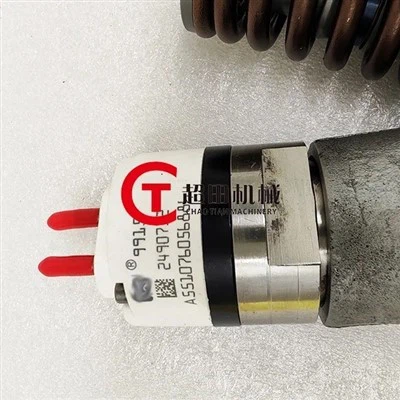A seal kit is a collection of seals designed to prevent the leakage of fluids, such as oil, water, and gas, in various mechanical systems. As a seal kit supplier, I have witnessed firsthand the crucial role these kits play in the proper functioning and longevity of machinery. In this blog post, I will delve into the purpose of a seal kit, exploring its significance in different industries and applications.


Preventing Fluid Leakage
The primary purpose of a seal kit is to prevent fluid leakage. In mechanical systems, fluids are used for lubrication, cooling, and power transmission. Leakage of these fluids can lead to a variety of problems, including reduced efficiency, increased wear and tear, and potential damage to the machinery. Seal kits are designed to create a tight seal between moving parts, preventing fluids from escaping and ensuring that the system operates smoothly.
For example, in an automotive engine, a seal kit is used to prevent oil leakage from the engine block, cylinder head, and other components. Oil is essential for lubricating the engine's moving parts, and any leakage can lead to increased friction, overheating, and ultimately, engine failure. By using a high-quality seal kit, automotive manufacturers can ensure that their engines operate efficiently and reliably.
Maintaining System Pressure
In addition to preventing fluid leakage, seal kits also play a crucial role in maintaining system pressure. In hydraulic and pneumatic systems, pressure is used to transmit power and control the movement of machinery. Seal kits are designed to withstand high pressures and prevent the leakage of fluids, ensuring that the system maintains the required pressure for optimal performance.
For instance, in a hydraulic excavator, a seal kit is used to prevent the leakage of hydraulic fluid from the cylinders, valves, and other components. Hydraulic fluid is used to power the excavator's boom, arm, and bucket, and any leakage can lead to a loss of power and reduced efficiency. By using a reliable seal kit, excavator operators can ensure that their machines operate at peak performance, even in demanding conditions.
Protecting Against Contamination
Another important purpose of a seal kit is to protect against contamination. In industrial environments, machinery is often exposed to dust, dirt, and other contaminants that can cause damage to the moving parts. Seal kits are designed to create a barrier between the machinery and the external environment, preventing contaminants from entering the system and causing damage.
For example, in a manufacturing plant, a seal kit is used to protect the bearings and other components of a conveyor system from dust and debris. Dust and debris can cause premature wear and tear on the bearings, leading to increased maintenance costs and downtime. By using a high-quality seal kit, manufacturers can ensure that their conveyor systems operate smoothly and efficiently, reducing the risk of breakdowns and production delays.
Extending the Lifespan of Machinery
By preventing fluid leakage, maintaining system pressure, and protecting against contamination, seal kits can significantly extend the lifespan of machinery. When machinery operates without leaks or contamination, the moving parts experience less wear and tear, reducing the need for frequent maintenance and replacement. This not only saves time and money but also improves the overall reliability and performance of the machinery.
For instance, in a power generation plant, a seal kit is used to protect the turbines and generators from oil leakage and contamination. Turbines and generators are critical components of a power generation plant, and any downtime can result in significant losses. By using a high-quality seal kit, power plant operators can ensure that their turbines and generators operate efficiently and reliably, reducing the risk of breakdowns and improving the overall productivity of the plant.
Applications of Seal Kits
Seal kits are used in a wide range of industries and applications, including automotive, aerospace, manufacturing, and construction. Some of the common applications of seal kits include:
- Automotive Industry: Seal kits are used in engines, transmissions, brakes, and other components of automobiles to prevent fluid leakage and ensure optimal performance.
- Aerospace Industry: Seal kits are used in aircraft engines, hydraulic systems, and other components to prevent fluid leakage and maintain system pressure in extreme conditions.
- Manufacturing Industry: Seal kits are used in machinery, such as pumps, compressors, and conveyors, to prevent fluid leakage and protect against contamination.
- Construction Industry: Seal kits are used in heavy equipment, such as excavators, bulldozers, and cranes, to prevent fluid leakage and ensure reliable operation in demanding conditions.
Our Seal Kits
As a seal kit supplier, we offer a wide range of high-quality seal kits for various industries and applications. Our seal kits are made from premium materials and are designed to meet the highest standards of quality and performance. We also offer custom seal kits to meet the specific needs of our customers.
Some of our popular products include the 101609-9150 S6K 3066 Fuel Injection Pump for Excavator E320C, Sensor 7861-93-2330 for 6D102 Engine PC200-7 PC300-6 Excavator, and 24V 11T Starter Motor T400268 for 1004 1006 Engine. These products are designed to provide reliable performance and long-lasting durability, ensuring that your machinery operates smoothly and efficiently.
Contact Us for Procurement
If you are in need of high-quality seal kits for your machinery, we invite you to contact us for procurement. Our team of experts is available to assist you in selecting the right seal kits for your specific needs and to provide you with competitive pricing and excellent customer service. Whether you are a small business or a large corporation, we are committed to meeting your seal kit requirements and helping you keep your machinery running smoothly.
References
- "Sealing Technology Handbook" by John H. Bickford
- "Mechanical Seals: Principles and Applications" by D. S. Buckley
- "Hydraulic Seals: Design, Selection, and Application" by R. K. Ivey






